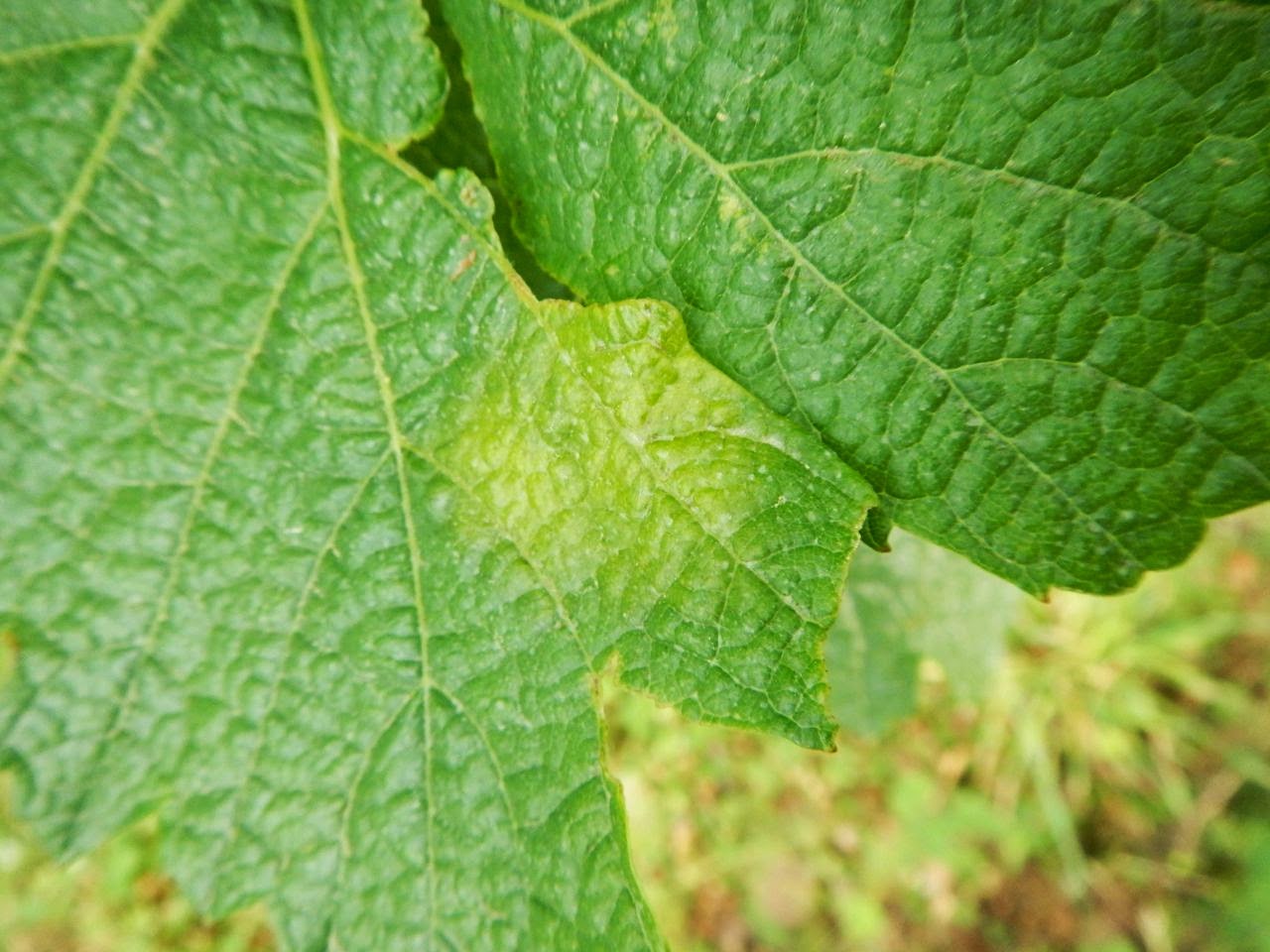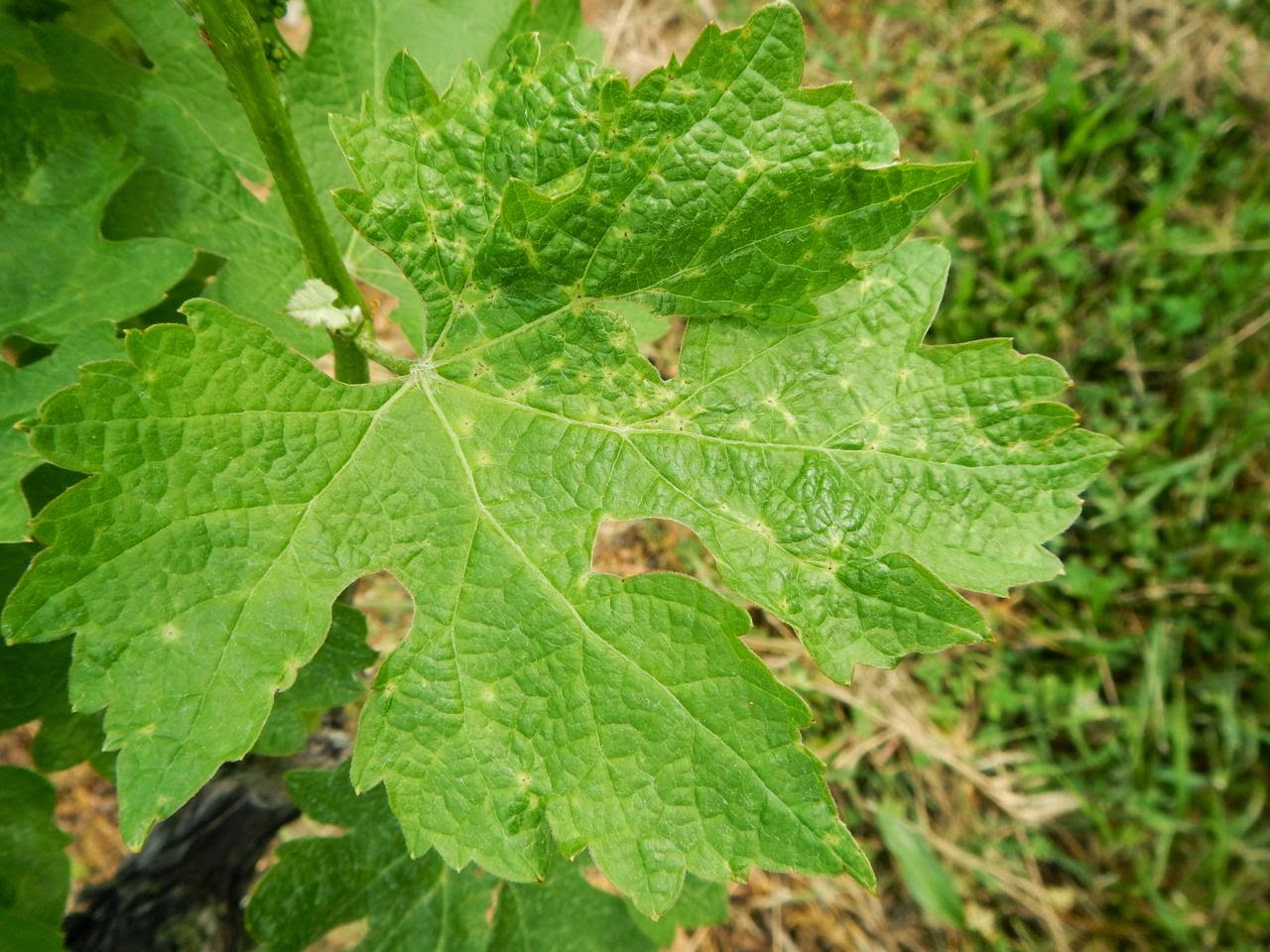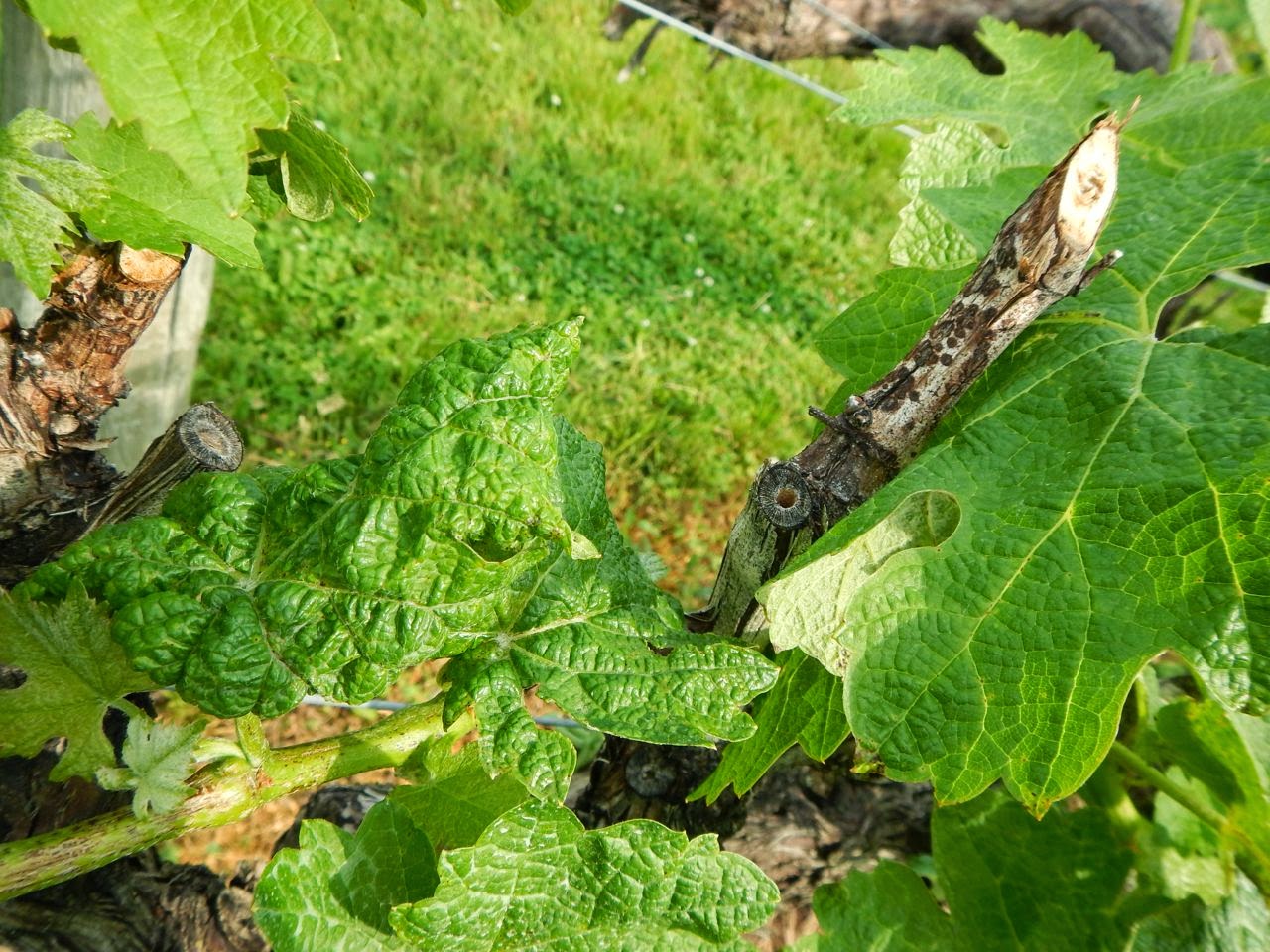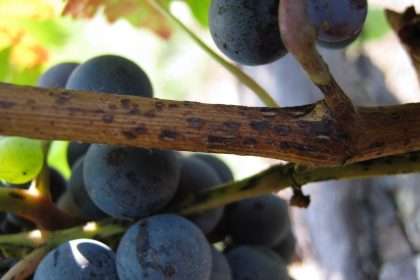We had a short shower event last evening; however, it was short and relative humidity did not stay high for a long time. Thus, it was not a major disease infection event, except, probably downy mildew, since it only take about 90 min under optimal condition.
Speaking of downy mildew, we have seen the beginnings of downy mildew in our experimental vineyard. Although our last application of mancozeb was only 10 days ago, rain events and humid nights probably promoted their development.
At the beginning, you will see yellow circular discoloration on upper surface of the leaf. Please note that sometimes insect can cause similar symptoms.
However, if you flip over, you will see tiny white growth (please click the picture to access to a higher resolution file). This won’t happen with an insect damage.
Please scout your vineyard, and if you see similar symptoms, it is probably a good idea to incorporate some of fungicides with kick-back activity. In fact, we applied a phosphonate (Prophyt) this morning.
The other disease I have noticed in our vineyard is Phomopsis. From the beginning of the season, we are having several cool rain events which promotes Phomopsis, and we know there is a population of Phomopsis in our older vines, so, no surprise here.
This is more or less typical symptom of Phomopsis, tiny spots on leaves, necrotic in the center with yellow halo around it.
Often, you will see necrotic lesions, almost like scars, on shoots and rachis too.
When Phomopsis gets early in the development, leaf can be deformed too.
Please note the proximity between the deformed leaf and a cane (1yr-old) with lesions from last year. Phomopsis produce spores on infected canes. Thus, it would not be a good idea to leave apparently infected canes. However, things happen. For this case, we left this cane on the vine because this vine has been very weak and we did not have many canes to pick from.











Would a curative spray be applicable to stop the down mildew spread? Any suggestions?
Yes, a material with kick-back activity will provide an efficacy against on-going disease infection process. Thus, we have applied Prophyt to our vines.
However, you should not abuse the use of them since pathogen(s) can become resistant to the material, especially when you apply repeatedly to already established colonies by selecting spores that may carry resistance mechanism against the chemical.
If you already have a wide spread case of downy mildew, which I hope not since we are still early in the season, you may want to hit them first with a contact material such as Oxydate, then follow-up with mancozeb + prophyt (or Ridomil).